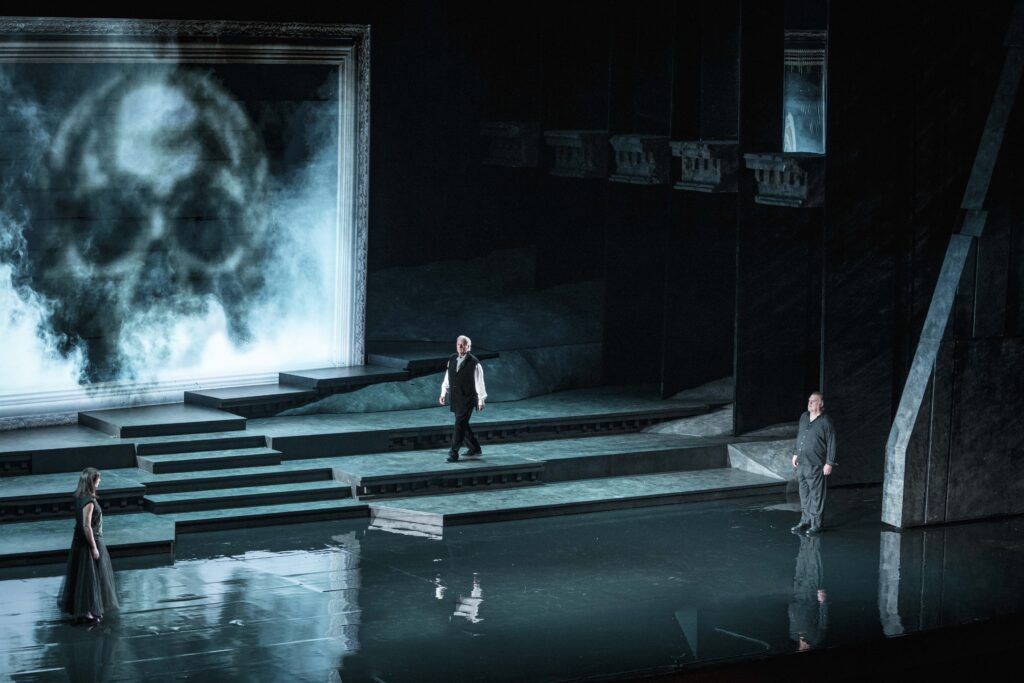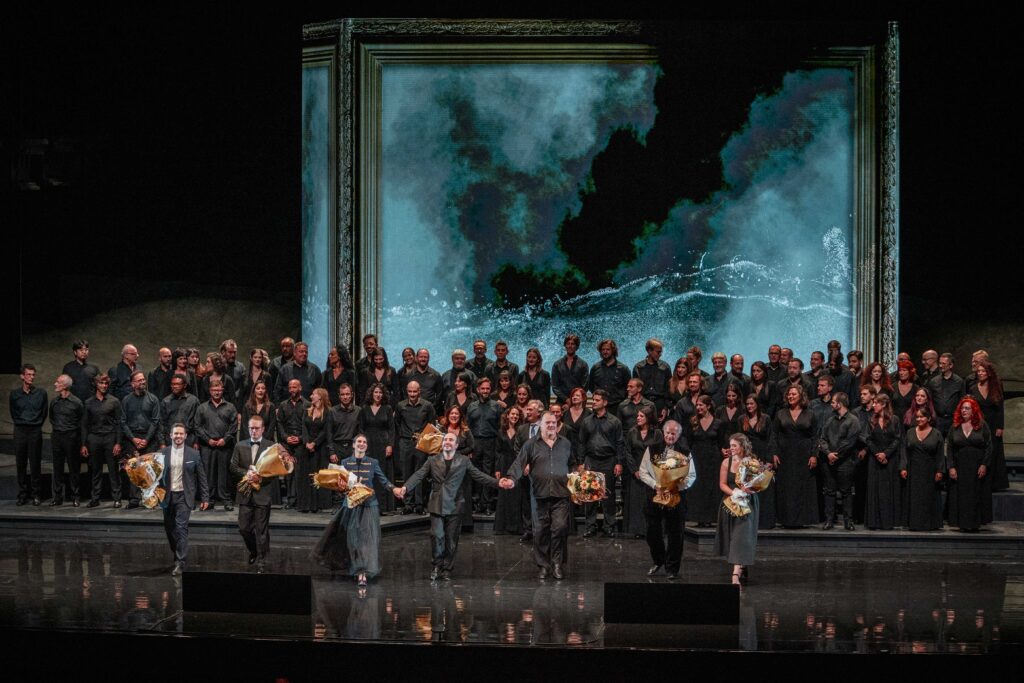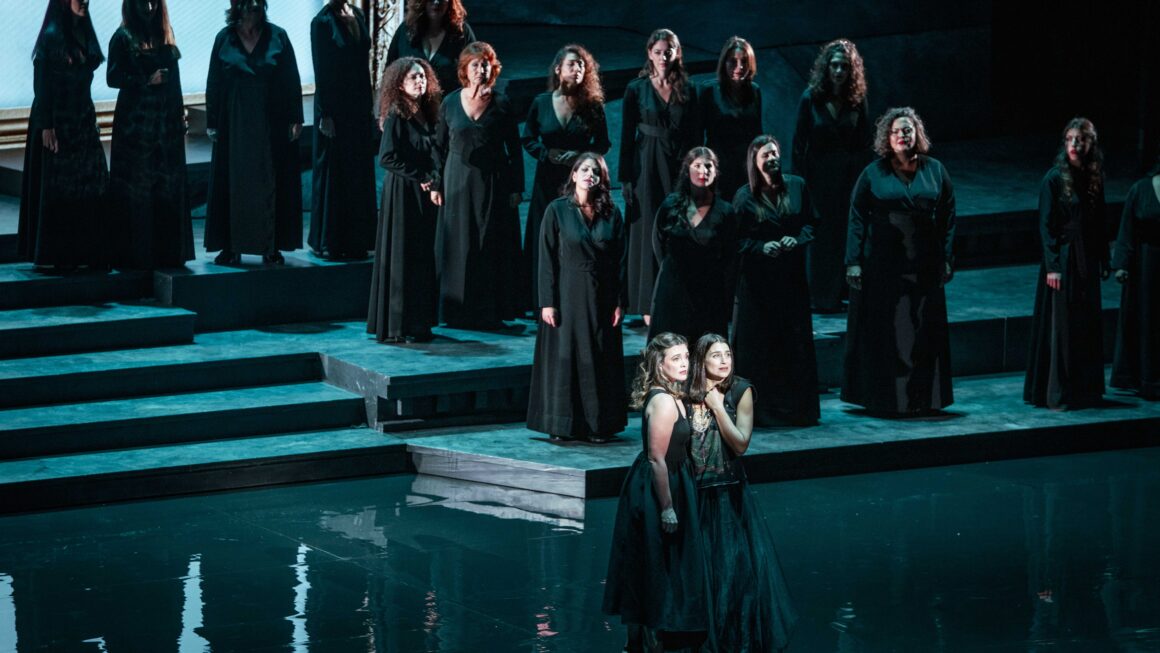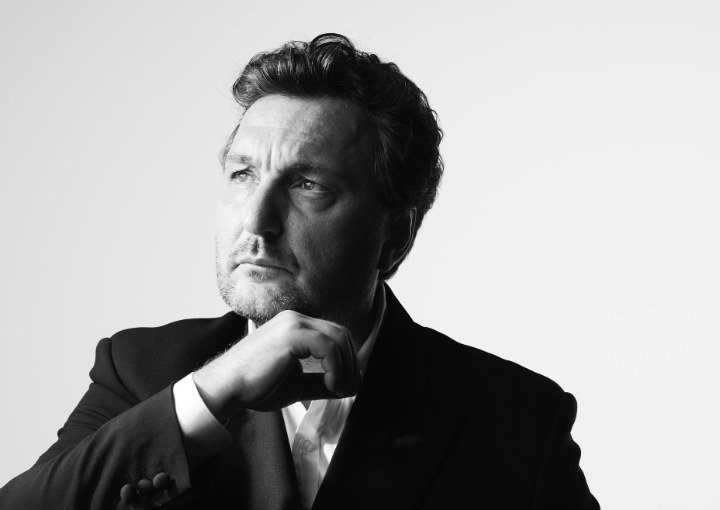“Nur alle sieben Jahre ist es ihm erlaubt an Land zu steigen und seine Erlösung zu betreiben—” Heinrich Heine
Written between May 1840 and August 1841, “the Flying Dutchman”, also known as “the Phantom Ship”, can be considered the first of Wagner’s great dramas, both for its musical structure and for the themes it addresses, which anticipate those of his later and mature works. Wagner drew inspiration from a literary source, Heinrich Heine’s maritime legend, but also from an episode recounted in his biography: during an adventurous sea voyage from Riga to London in the summer of 1839, his ship was wrecked on the Norwegian coast, and the sailors told him this dark tale of damnation. Although it has still a traditional structure—arias, duets, and chorus—The Flying Dutchman distances itself from conventional opera with its uninterrupted melody and the appearance of the first leitmotifs, associated with characters, objects, or abstract concepts, all themes introduced in the grandiose overture.
For this production, the Monte-Carlo Opera very intelligently chose the one-act version, as Wagner had originally composed it; later, for more practical reasons, he opted for a three-act version, with two traditional conclusions and a romantic transfiguration finale. The opera unfolds uninterrupted for two and a half hours, engaging the audience fully, aided by a “mis en espace,” framed by D_WOK projections.

The audience that crowded the Grimaldi Forum had come from Italy and France attracted from the stellar cast, which featured legendary past and present Wagnerian interpreters and the most sensational and iconic singer-actress on the opera scene today. In the title role, stood out the Welsh baritone Sir Bryn Terfel, who for the past 20 years has been the Dutchman of reference in major theaters around the world, announcing his departure from the role with this performance. His entrance “die Frist ist um,” was impressive and his identification with the character complete, both vocally and physically; every word and every movement on stage was calibrated to describe this sailor who, after seven years, returns to the mainland to seek a woman who will be faithful to him for eternity and allow him to rest in peace. Terfel’s voice has lost its luminosity and confidence in the upper register, but this was compensated by his extraordinary diction, in which every word was sculpted with lively accents, that blended masterfully with his stage approach. From this perspective, his encounter with Senta was memorable. Terfel reached the end of the opera vocally exhausted, with high notes more spoken than sung, but this did not affect a performance of the highest level, supported by a musical and scenic context of equal value.

The evening’s great triumphant was Asmik Grigorian, who finds one of her signature roles in Senta, a part that demands a powerful lyric soprano capable of conveying the drama of this fragile yet indomitable character, who flees a bourgeois marriage to sacrifice her life for the rescue of the Flying Dutchman. Grigorian masters the particularly heavy tessitura with great ease: the low notes, up to B flat, are full and resonant, and her voice shines in the mid-to-high register, with luminous high notes that cut across the incandescent orchestration. The final high B of “treu dir bis zum Tod” is thrilling, concluding a stratospheric performance that opened with a dazzling interpretation of Senta’s ballad, the psychological center of the opera, in which each of the three stanzas was characterized by different accents, in the balance between reality and refuge in the supernatural.
It’s well known that Grigorian is an extraordinary actress; but in this highly ambiguous role, perfecting her already notable performance at Bayreuth, Asmik manages to find an impressive affinity and stylistic signature: every movement, every glance, every silence becomes theater that hypnotizes the spectator and involves him in a drama of rebellion, death, and delirium.
Daland was played by Albert Dohmen, a Wagnerian interpreter of historic stature, a key figure in the role of Wotan, and a great interpreter of the Dutchman, who has also recorded under the baton of Marek Janowsky. Approaching 70, he played Senta’s father, with a bass register still fully resonant, giving a portrait more familiar than cynical, a performance that also drew the audience’s affection. Daniel Behle was Erik, Senta’s betrothed; the German tenor standed out for his clear voice and articulated diction, well performing a character who acts in a world of reality that contrasts with the dreamlike world of Senta and the Dutchman. Trystan Llyr Griffiths was also excellent, singing the Song of the Steersman “mit Gewitter und Sturm aus fernem Meer” with a beautiful warm tenor voice and fervent ardor.
Musical direction was entrusted to the young Italian conductor Gianluca Marcianò, who, at the helm of the Monte-Carlo Philharmonic Orchestra, offered a solid and effective interpretation of Wagner’s challenging score, beginning with the excellent performance of the overture, which expounds upon all the opera’s leitmotifs and summarizes them in just over 10 minutes. Marcianò consistently maintained tight tempos, supporting the unfolding of the drama and its emotional intensity; at times, a broader palette would have been desirable, especially given the excellent acoustics of the great Grimaldi Forum.
Where Marcianò truly excels is in his accompaniment of the principal solo moments, offering Grigorian and Terfel the opportunity to fully showcase their prodigious vocal and musical talents. The performance of the male and female choruses, particularly engaged in this opera, was also worthy of great praise. They were admirably conducted by Stefano Visconti, who received at the end huge applause from the audience. The scenic design was also entirely satisfactory, thinking the horrors that Wagner’s staging had very often produced. The projections, set against the backdrop of the stage in a frame reminiscent of the painting Senta gazes at dreamily, evoke the sea, a constant presence in the score, from the fortissimo storm that opens the opera and subsequently the protagonists’ dreams and nightmares. The stage on which the action unfolds was entirely black, as were the costumes of the protagonists and the chorus; the only exception was the white shirt worn by the bourgeois characters, Daland, Erik, and the Steersman.

Senta’s dress also features the image of the Dutchman on her bodice. When the protagonist believes he has witnessed Senta’s betrayal and his desperate cry of “verloren,” the stage tinged with red and remains so until the girl’s final sacrifice. This setting also allows the singers to always be at the front of the stage and therefore to move and perform to their fullest potential. The long gaze of the Dutchman and Senta, who meet for the first time and remain motionless before slowly approaching each other until they almost touch, was a moment of sublime theater, thanks above all to the exceptional stage presence of Terfel and Grigorian. The show was a great and well-deserved success, with prolonged applause for all the artists and peaks of enthusiasm when the diva Asmik appeared on stage.
:::::::::::::::::::::::::::::::::::::::::::::::::::::::::::::::::::::::::::::::::::::::::::::::::::::::::::::::::::::::::::::::::::::::::::::::::::::::::::::::::::
CAST
Daland: Albert Dohmen
Senta: Asmik Grigorian
Erik: Daniel Behle
Mary: Angharad Lyddon
Steersman: Trystan Llyr Griffiths
The Dutchman: sir Bryn Terfel
Conductor: Gianluca Marcianò
Chor : Stefano Visconti




